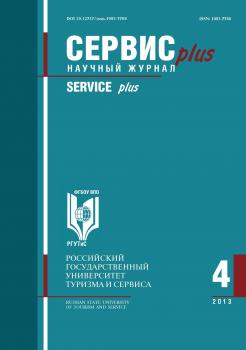The leading type of nature use in Crimea is recreation. In this article, the peninsula is considered as a tourist region, identified are its strengths and weaknesses, opportunities for its development and threats it is facing. Many of them are associated with joining the peninsula to Russia in March 2014 and a variety of consequences of this event. During the last year significantly decreased the number of tourists and accessibility of the peninsula, which dramatically increases the urgency of the construction of a transport crossing in Kerch. The article provides recommendations for the development of new types of tourism, which, along with the improvement of relations with Ukraine and the transport passage allow to increase the number of tourists. This is important both for the economy of the Crimea as a whole, and for the majority of its inhabitants. The paper also proposes to carry out a redistribution of tourist flows and to actively pursue the advertising campaign of the Crimea as a tourist region in the information space of the Russian Federation. It can be used by patriotic sentiments that have taken place in the country after joining the Crimea. The popularity of the peninsula could rise as a result of the depreciation of the Russian ruble, which significantly changes the situation on the market of tourist services. It is proposed to consider the coast of the Crimea as a set of natural and natural-social system that provides new opportunities for environmental management in the coastal zone. In particular, this approach allows identifying the most important tourist potential areas of the territory, as well as spatial boundaries of human impact. In recent years, the share of organized tourist sharply increased and the geography of tourism greatly changed. It should be remembered that for Crimean are important both organized and unorganized holiday makers.
Crimea, shore, recreation, tourist flow, types of tourism, transpor
В настоящее время особую актуальность приобретает вопрос использования туристских ресурсов Крыма. Впервые за многие годы имеет место стремительное уменьшение (по некоторым оценкам, примерно двукратное) количества туристов на полуострове, а также, по всей видимости, впервые за последние несколько десятилетий — превышение числа организованных туристов над неорганизованными и увеличение доли организованной рекреации в несколько раз. Основная причина этих изменений — присоединение Крыма к России и резкое ухудшение его физической и психологической транспортной доступности, а также формирование отталкивающей украинских туристов репутации как у полуострова, так и у крымско-украинской границы. В настоящее время, к сожалению, ситуация только ухудшается. В конце декабря отменены ряд поездов в Крым, а также международные автобусы.
Минимизация уменьшения туристского потока и постепенный выход на его увеличение является важнейшей задачей для экономики полуострова, от решения которой зависит благосостояние его жителей. Предпринимаемые Россией в течение 2014 г. меры — субсидирование авиаперелетов, интенсификация использования паромной переправы через Керченский пролив,
1. Bredikhin A.V. Rekreatsionno-geomorfologicheskie sistemy [Recreation and geomorphological systems], Smolensk: Oikumena, 2010. 328 p.
2. Dolotov V.V., Ivanov V.A. Povyshenie rekreatsionnogo potentsiala Ukrainy: kadastrovaia otsenka pliazhei Kryma [Increasing the recreational potential of Ukraine: cadastral assessment of Crimea´s beaches]. Sevastopol´: Izd-vo MGINANU, 2007. 150 p.
3. Efimova L. V. Aksiologicheskie problemy SMI [Axiological media problems] // Servis plus. 2014. T 8. № 2.
4. Ignatov E.I, Orlova M.S., Sanin A.Iu. Beregovye morfosistemy Kryma [Coastal morphological systems of Crimea]. Sevastopol´: NPTs «EKOSI-Gidrofizika», 2014. 267 p.
5. Gnatov E.I. Beregovye morfosistemy [Coastal morphological systems] // Ekologicheskaia bezopasnost´ pribrezhnoi i shel´fovoizonikompleksnoeispol´zovanieresursov shel´fa. Sborniknauch. trudov, Sevastopol´, 2003, № 9. pp. 178-201.
6. Ignatov E.I., Chistov S. V, Ivanov V.A. Proiskhozhdenie, istoriia razvitiia i dinamika kosy Tuzly [The origin, history and dynamics of Tuzla]. // Ekologicheskaia bezopasnost´ pribrezhnoi i shel´fovoi zon i kompleksnoe ispol´zovanie resursov shel´fa: Sb. nauch. tr. NAN Ukrainy MGI, OF In-BIuM. Sevastopol´, 2004. № 10. pp. 198-206.
7. Kortunov V.V. Imitatsiia zdravogo smysla. Ocherki po teorii mirovoi kul´tury [Imitation of common sense. Essays on the Theory of World Culture]. M., 2001.
8. Kortunov V. V. Begstvo ot real´nosti ili oborotnaia storona telekommunikatsionnykh tekhnologii [Escape from reality or the downside of telecommunication technologies]. M., 2003.
9. Pavlenok P.D., Kharitonova T. V, Krivosheeva T.M., Anikeeva O.A., Mitiurnikova I.A., Shemeneva O. V, Mozgovaia T.M., Krasnova O.N., Fodoria A.Iu., Pogrebova E.S. Kachestvo zhizni naseleniia sovremennoi Rossii v kontekste sotsial´nogo gosudarstva [The quality of life of the population of modern Russia in the context of the welfare state]. Research report (Federal´noe agentstvo po obrazovaniiu). M., 2010.
10. Patiichuk 1.0. Fiziko-geograficheskieosobennostiigeoekologicheskoesostoianieprirodnoisredypoluostrova Krym [Physical geographic features and geo-ecological state of the environment of the peninsula of Crimea]. PhD abstract. M.: Izd-vo MGU, 2011. 27 p.
11. Prygunova II. Rekreatsionnye territorii v strukture ekologicheskogo karkasa Kryma [Recreational area in the structure of ecological frame of Crimea]. PhD abstract. M.: Izd-vo MGU, 2005. 28s.
12. StoliarovD.Iu., Kortunov V.V. Kul´turologiia [Cultural Studies]. M., 1998.
13. ShuiskiiIu.D., VykhovanetsG. V Ekzogennyeprotsessy razvitiia akkumuliativnykhberegovv severo-zapadnoi chasti Chernogo moria [Exogenous processes of accumulative coasts in the north-western part of the Black Sea].M.:Nedra, 1989. 198 p.
14. Cnorley R.J. Geomorphology and general Systems theory// U.S. Geol. Survey Prof. Paper. 1962.Vol/500. B. P. 45-55.
15. Cowell, P. /., andThom, B.G, 1994. Morphody namics of coastale volution //In Carter, R.W.G, and Woodroffe, CD. (eds.), Coastal Evolution. Cambridge: Cambridge University Press, pp. 33-86.
16. Krasnova O.N. Problems of social cohesion development. Middle East Journal of Scientific Research. 2014. T 19. № 3.
17. Michal Vanek, Milan Mikolas, Kateniina Tivakova Evaluation methods of SWOT analysis // Geo Science Engineering Volume LVIII (2012), p. 23-31.

















